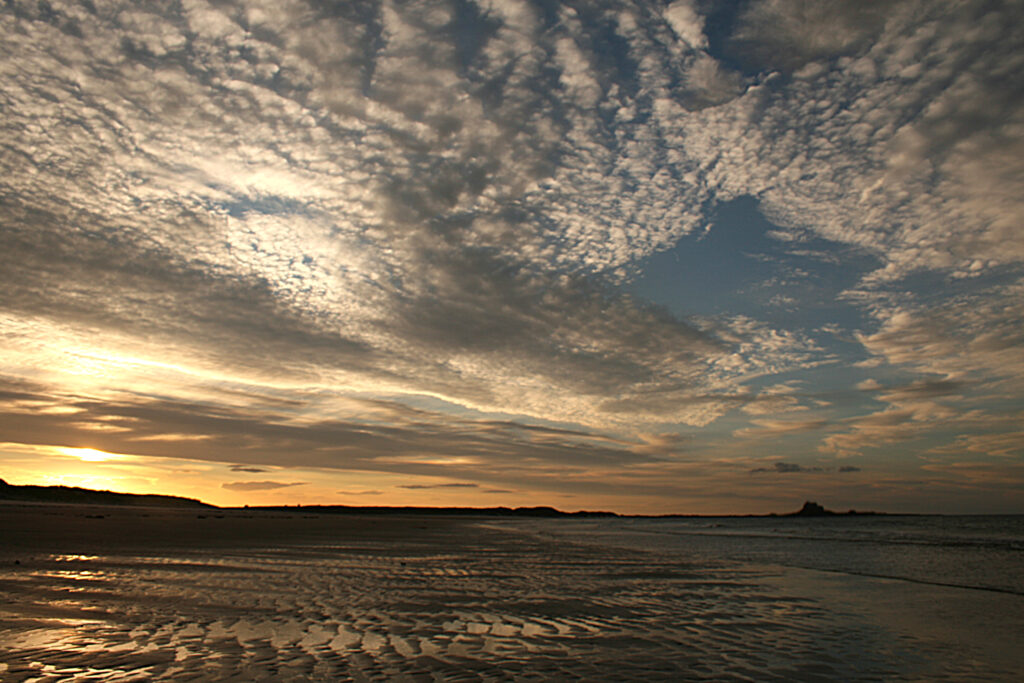The King’s Monks

For Oswald the Battle of Heavenfield was a triumph. For Iona it was vindication of their support for this Anglo-Saxon ætheling. At a sword stroke, he went from prince in exile to king of the most powerful realm in Britain.
Oswald set out immediately to render thanks to those to whom he credited his victory: St Columba and the monks of Iona. He sent to the abbot, Ségéne, asking him to send monks from Iona to work for the conversion of his people. Oswald’s family was of the northern, Bernician, line, centred around the stronghold of Bamburgh, whereas Edwin’s line sprang from the southern, Deiran, line, which had its origin in the region of York. So when Ségéne sent a party of monks, led by a young man named Aidan, Oswald gave them for a site for their monastery an island that, standing upon the ramparts of the family stronghold at Bamburgh, he could see jutting from the coast to the north: Lindisfarne.
Lindisfarne was a special island, linked and then separated from the mainland twice daily by the falling and rising of the tides. To this day it retains a unique atmosphere, particularly during those periods of estrangement when the sea rises to cover the causeway and all the coach tour parties have left. Then, Lindisfarne becomes a place apart, home to terns and seals and the lingering sense of a long-ago sanctity.
0 Comments